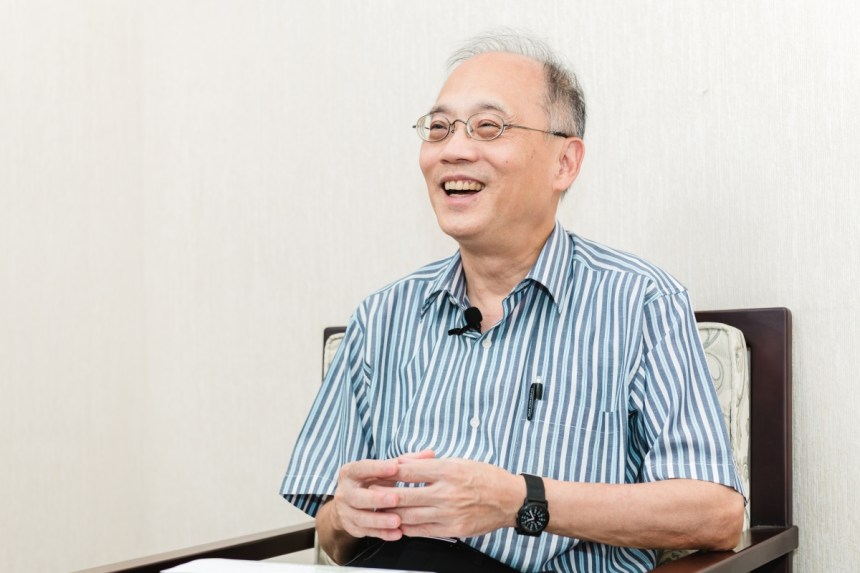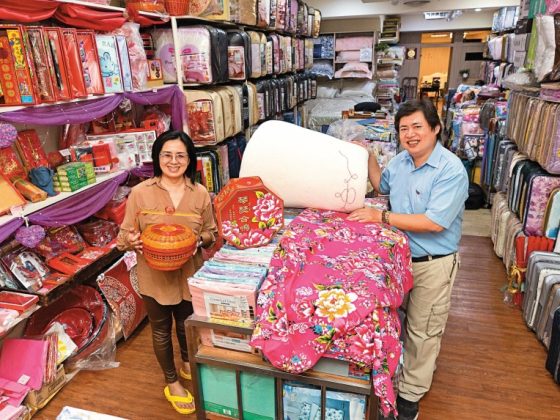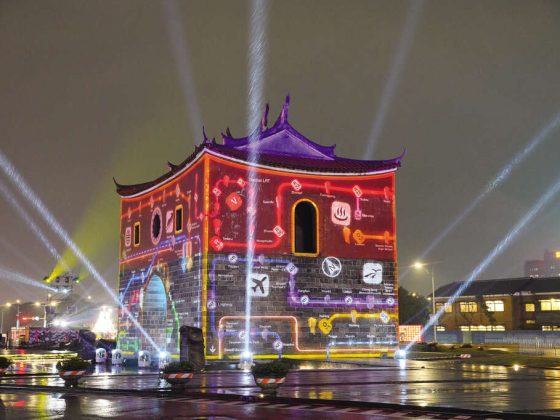Idyllically situated in green foothills of Taipei’s Shilin district (士林區) lies the world-renowned National Palace Museum. Known for its ancient Chinese artifacts and magnificent paintings, it’s no wonder millions of visitors pass through the doors of this great building every year to learn about one of the world’s longest-standing cultures. In order to find out more about this iconic venue, Taiwan Scene sat down with museum director Wu Mi-Cha (吳密察) to discover the secrets behind the museum’s hidden treasures. (You might also like: 6 things to do in Taipei that should be on every visitor’s bucket list)

Q: Could you share with us how the National Palace Museum came to be in Taiwan in the first place?
When the last dynasty, the Qing Dynasty, came to an end in the mid-1920s, Emperor Puyi (溥儀) was expelled from the imperial palace and upon his leaving, they created a special committee dedicated to cataloguing all the artifacts. And because of this, you will find that most of the items in the National Palace Museum are from the imperial palace of the Qing Dynasty. And with the ongoing war, moving items became increasingly difficult. So, just like how you would move houses today, the priority for choosing items back then came down to two criteria: 1) how prized the item was, and 2) how moveable it was. That’s why you will find that the collection of artifacts at our museum represent the best and most exquisite yet are relatively smaller in size. Also, for the people of the Qing Dynasty at the time, their own paintings were considered a form of “modern” art, therefore, Song (宋) and Yuan (元) dynasty paintings were actually more sought after, and that is reflected in the National Palace Museum’s collection as well.

Q: How have these collections been preserved? What methods or technology are used?
Nowadays, restoration technology is very cutting-edge. We even have X-ray scanners that can tell us the composition and makeup of each artifact, which can then teach us how better to preserve it. Beijing’s natural climate is very different from that of Taipei, so we must take higher precautions when working with these artifacts. The good news is that the government is more willing to spend on restoring these items than ever before, and the technology is also much more advanced than in the past.

Q: What is the daily schedule of the National Palace Museum director like?
I usually leave the house before 8am to arrive before my colleagues. And on my way to work, I use LINE to discuss any potential media and press or request paperwork in advance. When I arrive at the office, it’s easy – like being a student all over again, I just follow the timetable of my “classes.” We have multiple shared cross-departmental calendars so everyone can see what others are doing, and vice versa. Different departments must come together for various projects and, oftentimes, I have to act as the liaison between everyone. Together we feel that the National Palace Museum is one of the many faces of Taiwan, so it’s important that we maintain that image and integrity for all our visitors.

Q: What are the high points and challenges of being the National Palace Museum director?
Well, I would consider myself a workaholic, so the challenges are often high and the joys low (chuckles). The most important part of working in a museum is remembering that it is not only a research-oriented facility but also a service-based industry. Focusing on research alone is not enough to do well in this line of work. Similar to working as a chef in a kitchen, you cannot only be concerned with the quality of the food. You must also be aware of its presentation and the quality of service for customers. Lacking in any one area will set you up for failure. Being the museum director is basically like being the “CEO” of the museum – you must face budget and expense concerns as well as management issues. It’s a tough job, but I love it.
Q: What is your personal favorite corner of the National Palace Museum?
To be honest, I don’t have much opportunity nowadays to walk around the museum on my own and actually enjoy the exhibits or artifacts. However, I do have my own personal corner of the office where I can look out onto the main upper platform and garden. It’s from there that I really enjoy seeing visitors taking pictures and enjoying themselves at the museum we’ve worked so hard to build up and maintain.

Q: The National Palace Museum is listed on the “World’s Top 20 Most Popular Museums.” How many people visit the museum every year? How does the National Palace Museum handle such a large number of tourists?
On average, we receive about 4 million visitors a year and our Southern Branch in Chiayi receives about 800,000 visitors a year. There has been a slight decrease in Chinese tourists over the years, but also a surprising rise in tourists from other Asian countries such as Japan, Korea, and parts of Southeast Asia. How we accommodate that many tourists is our greatest challenge, but we’re currently working on improving areas such as ticketing, accessibility, and traffic flow. These new improvements will kick in just in time for our peak seasons around October (Double Ten Day) and Chinese New Year, so stay tuned! (Read Also: 10 things to do with your parents in Taipei)

Q: Of all the 700,000 artifacts in the National Palace Museum, do you have any personal favorites? Could you share with us your top five and why?
Beauty is very subjective and everyone’s view of art is different. And to be honest, I probably have seen only 100 more items than the average visitor. Every three months, we hold a random spot check where I have the opportunity to view tens of items from outside the storage room (I’m not even allowed in the storage room!). And we’ve had only three spot checks so far, so you can do the math yourself (chuckles).
However, if I had to choose, I would say the Northern Song Dynasty Ru ware collection is my favorite, more specifically, the Lotus-shaped Warming Bowl and Plain Narcissus basin or “dog bowl” as they call it (chuckles) – nicknamed after the emperor who wrote a poem hinting that it’d be rather useful as a dog bowl.

It’s very rare for man-made items to have the perfect combination of everything at once: hue, shape, and kiln firing – especially the firing. Hue and shape you can change, but the firing and resulting cracks are solely dependent upon nature. And you cannot change or alter nature. Under close inspection, you literally cannot find a single imperfection in these two items!
Also, a personal favorite of mine is one of the paintings in our Qing Dynasty Taiwan Maps collection. Although it wouldn’t be described as beautiful by the general public, it was something I did historical research on nearly 15 years ago, so of course, I’m a bit biased towards it.
Most visitors come to see the Jadeite Cabbage or Meat-shaped Stone, and they are popular artifacts with good reason. But I still prefer my Ru ware. I also encourage visitors to check out our Southern Branch in Chiayi, too. It’s a much more modern building containing lots of other artifacts that are also worth admiring.
More Insights from Taiwan Insider
- [Taiwan Insider] The Origins of Bubble Tea with Chun Shui Tang
- [Taiwan Insider] Reaching New Heights: A Guide to Taipei 101
Planning a Tour to National Palace Museum?
Visitors can inquire their tours to National Palace Museum in Taiwan here.













Comments are closed.